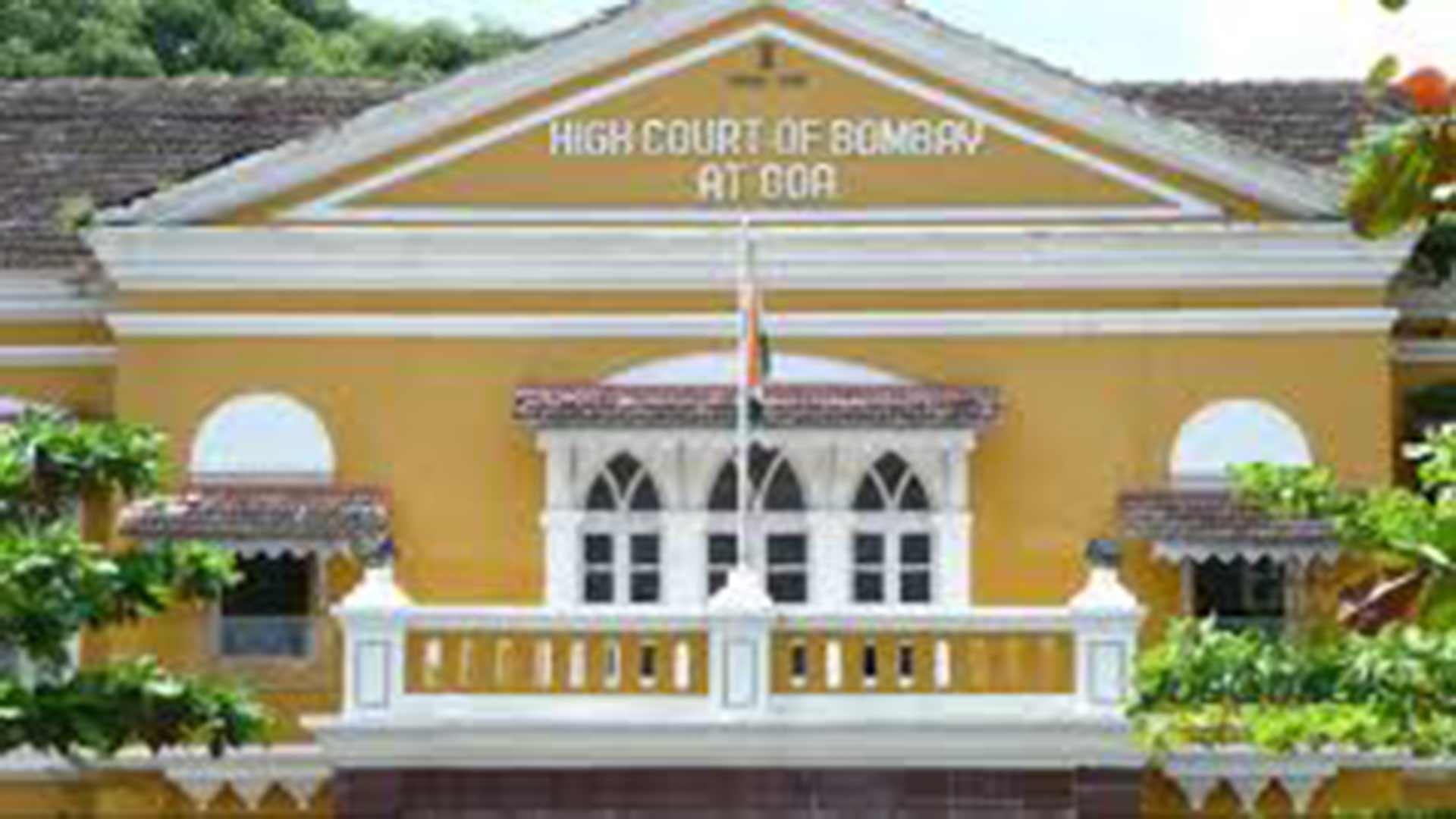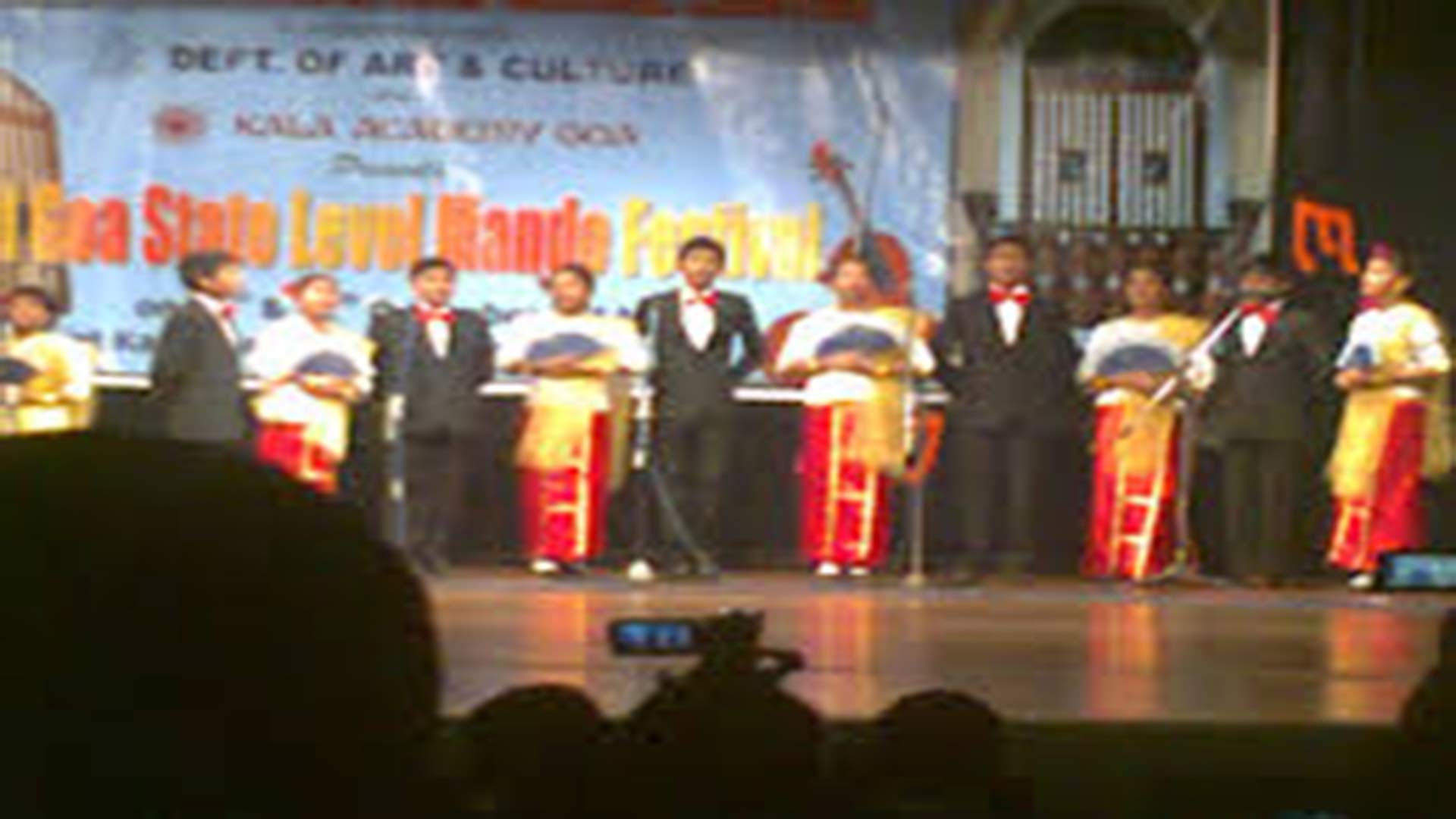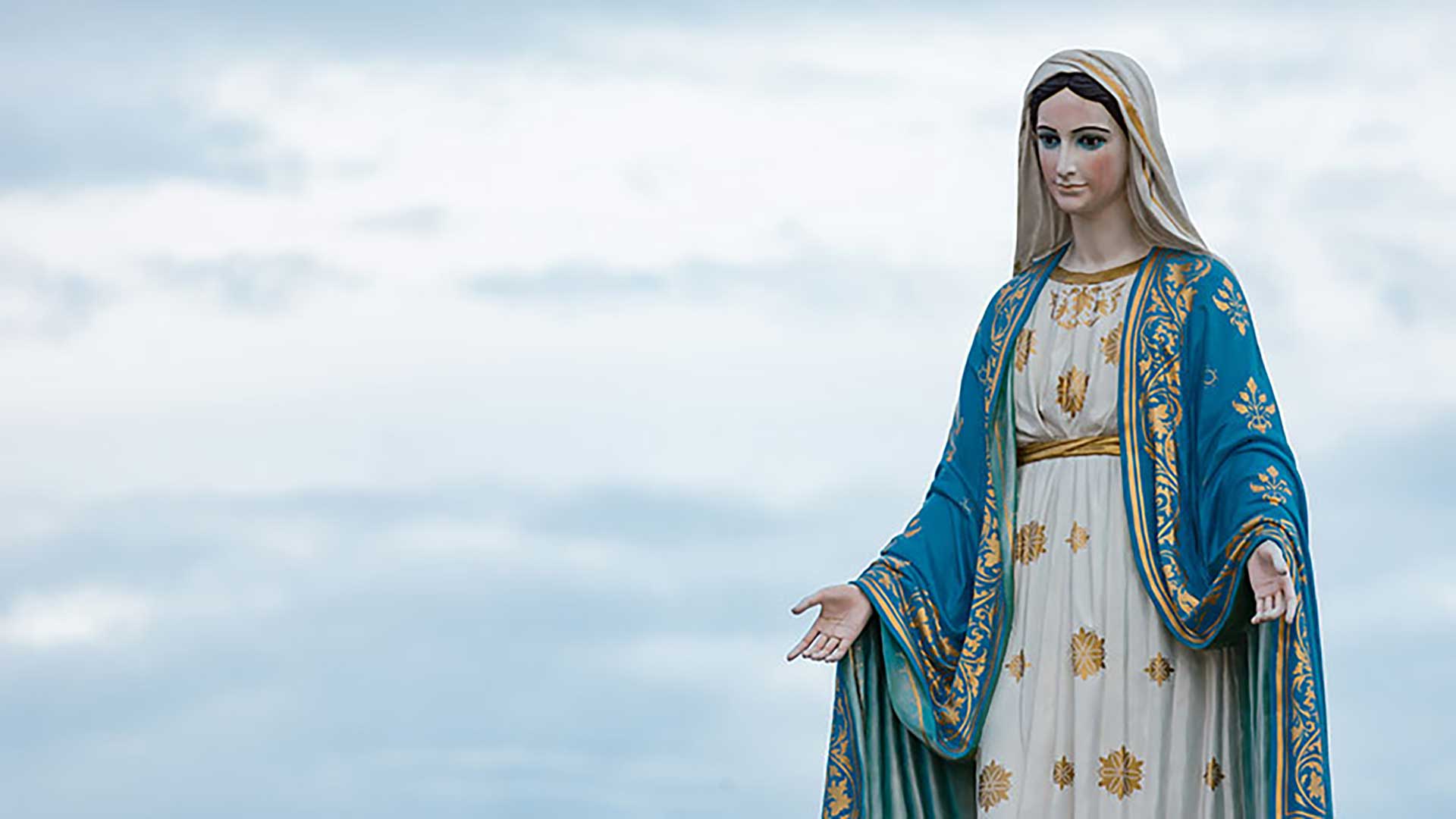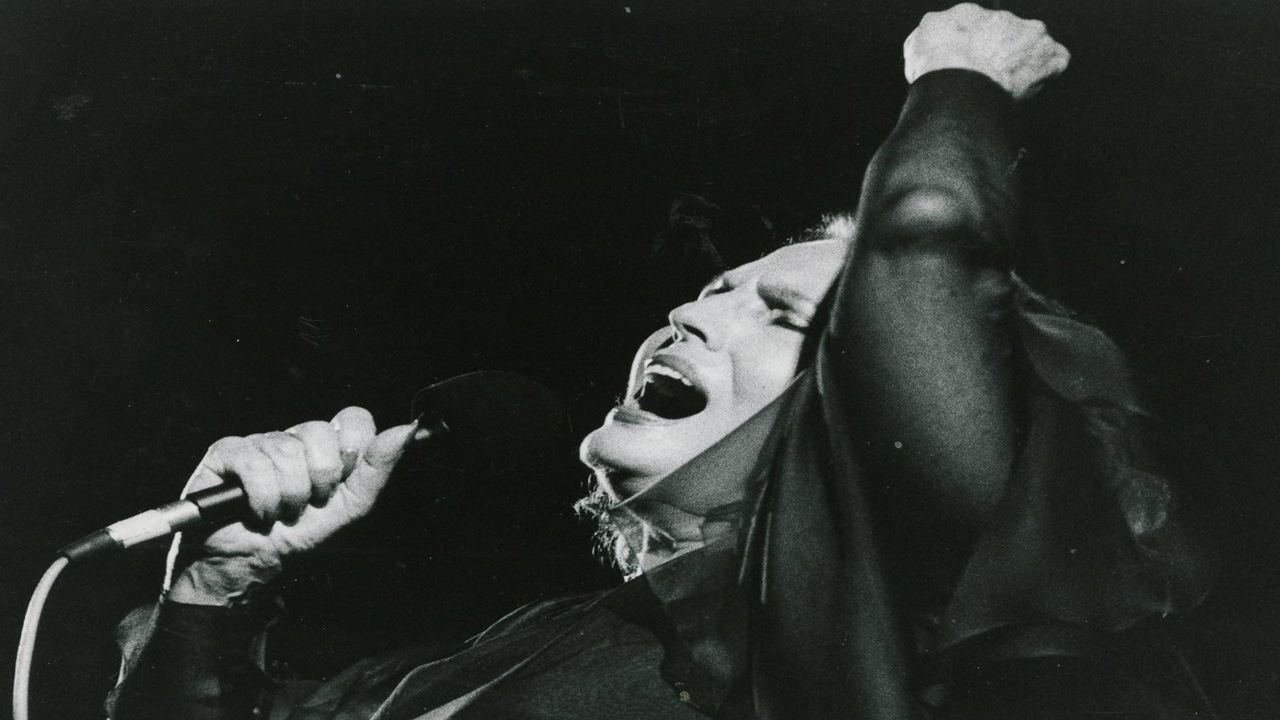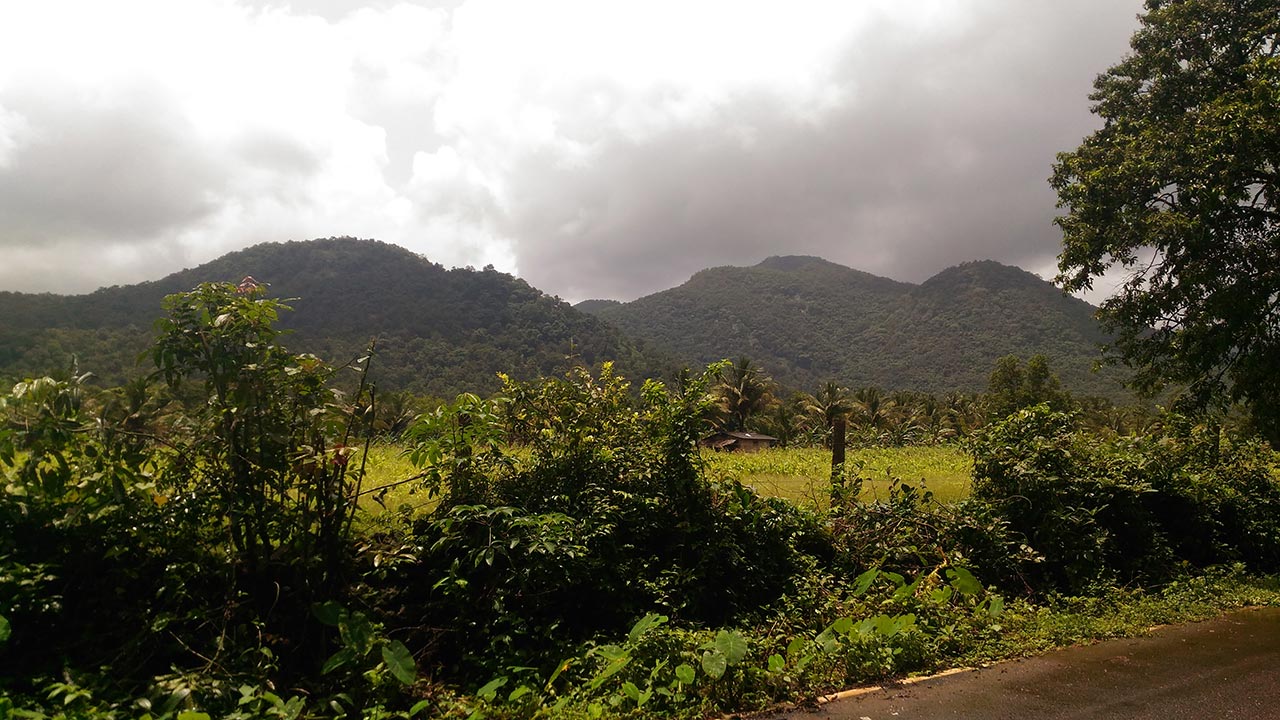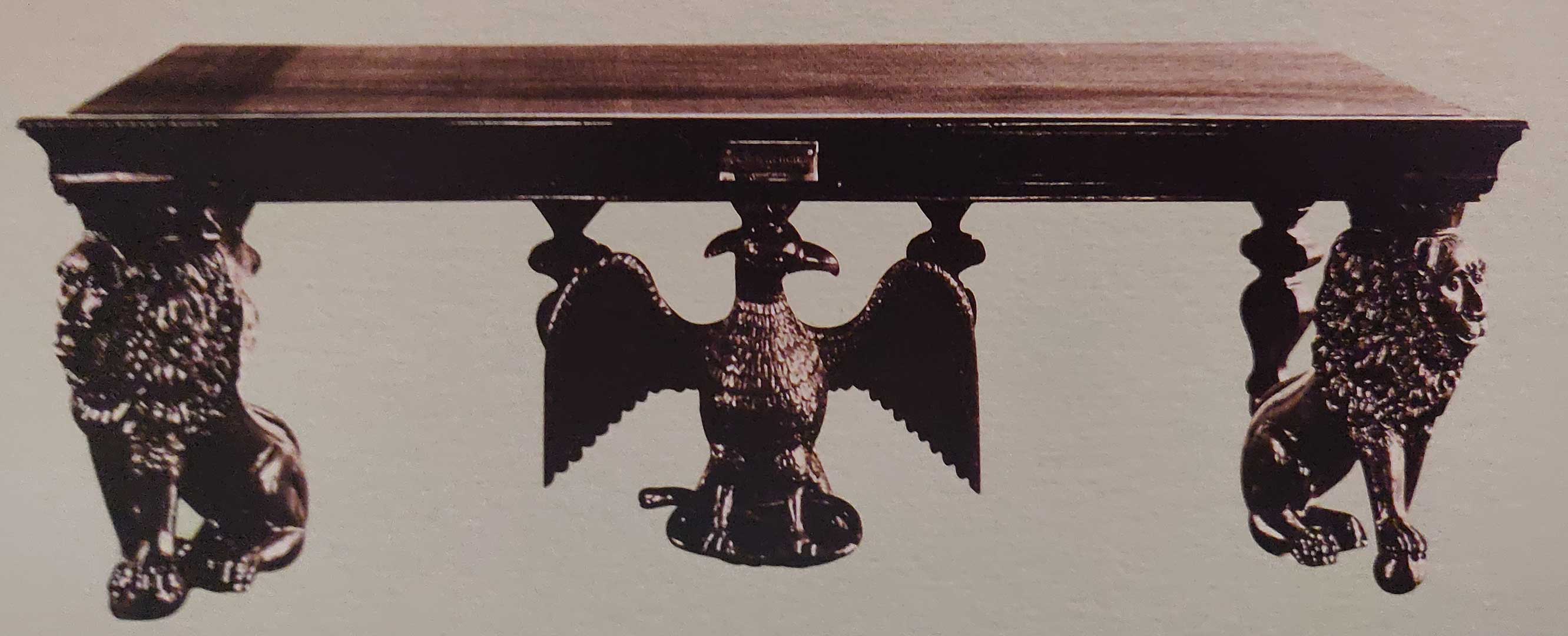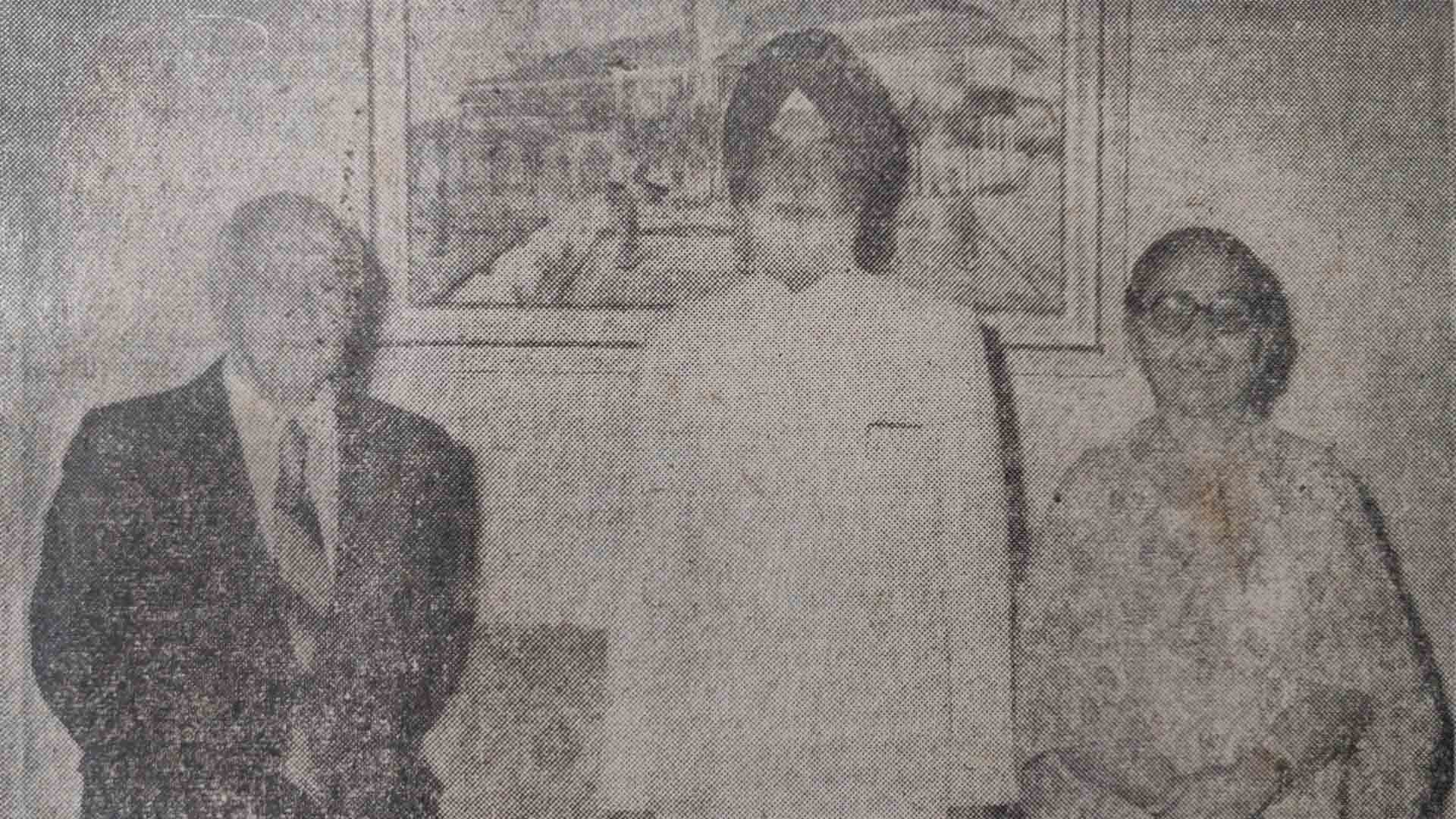The long arm of the law
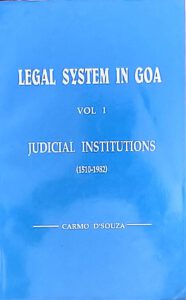
Legal System in Goa, Vol. 1, Judicial Institutions (1510-1982), by Carmo Souza, [Self-published, 1995], pp. 189, Rs 150
With the debate on the Uniform Civil Code picking up in the country, the history of the legal system in Goa can well be expected to come into focus very soon. Our Civil Code, framed by the Portuguese and still in force, as well as the judicial system developed by them, had been the object of praise for the then chief justice of India, Y. B. Chandrachud, when he opened the Goa bench of the Bombay High Court in Pangim, in 1982.
Carmo Souza's book on the legal system in Goa is a welcome addition to literature on the subject hitherto found only in Portuguese. Originally his doctoral thesis submitted at the University of Poona, this academic presentation traces the developmental history of the judicial system in Goa from 1510 to 1982. Logically, this should have been preceded by a study of the legislation and legislative institutions of the corresponding period, in an independent volume. But this will hopefully come as a sequel.
The present volume assumes importance for several reasons. The Portuguese were the first colonial power to set foot and control a vast Oriental empire. Once Goa became their headquarters of the empire, the Tribunal da Relação, or High Court, established in the old city of Goa in 1544, administered justice at the appeal level to all the Portuguese possessions and settlements from the Cape of Good Hope to the China Seas. With them was formed the modern concept of international law in trade, commerce, and navigation.
In the introductory chapter, the author refers to old and modern judicial institutions in Portugal and compares them with those set up in the Estado da Índia. Chapter 2 gives a brief idea of the pre-Portuguese judicial system in Goa, including the Comunidades, and goes on to discuss twenty major offices and institutions that administered justice sectionally, "taking into consideration the different interests and pressures arising in the cosmopolitan society created by a maritime empire.” That list includes, among others, the Tribunal da Relação (treated in detail in chapter 3) and the Holy Tribunal of the Inquisition which, the author says, quoting a contemporary (ex-) Jesuit historian, had “apparently won the confidence of the natives.”
Chapter 4 dwells on the tumultuous period from 1800 to 1961, marked as it was by the advent of constitutionalism in Portugal. A new process began with the decree of 1832/36. Goa saw the addition of the New Conquests, wherein the indigenous system of judicial administration continued. Uniform dispensation of justice came only towards the end of the nineteenth century.
"Post-Liberation Judiciary” makes up the final chapter. This treats the dismantling of "a vibrant system”. Problems encountered in the transition phase are brought out. Interviews with judges and lawyers of the erstwhile regime, if included here, might have thrown more light on the topic.
Souza attempts to provide insight into whether certain institutions under the civil law system may be used in the Anglo-Indian system and the possibility of creating healthy hybrid institutions. He mentions the possibility of Goa having a High Court of its own.
Legal system in Goa is not critical as to advance any value judgements. This does not, however, detract from the rich documental value and the pioneering effort at systematization undertaken by Carmo Souza of a much neglected body of knowledge. His work could well serve as a background for the studies of judicial institutions of erstwhile Portuguese colonies in Asia, Africa and South America too.
(Herald - The Illustrated Review, 15-30 June 1995. A shorter version of this review, titled 'Fresh Legal Insight', appeared in 'Panorama', The Navhind Times, 1 Oct 1995)
The Hypnotist in Holy Orders
 He is better known as a personage in Alexandre Dumas’ novel The Count of Monte-Cristo Chateaubriand mentions him, albeit in derogatory terms, in his memoirs. In Goa, he is only vaguely known for his father’s cry ‘Hi soglli bhaji!’ which instantly filled with confidence the faltering preacher son at the royal chapel at Queluz, Portugal.
He is better known as a personage in Alexandre Dumas’ novel The Count of Monte-Cristo Chateaubriand mentions him, albeit in derogatory terms, in his memoirs. In Goa, he is only vaguely known for his father’s cry ‘Hi soglli bhaji!’ which instantly filled with confidence the faltering preacher son at the royal chapel at Queluz, Portugal.
Precious little remains till date in the memory of the average Goan. There is a statue of him in the capital city and a street takes his name in Margão. He has been forgotten in his native village of Candolim; only a primary school is named after him there and in some other villages too. He is almost unknown where he worked and lived – Lisbon, Paris and Marseilles. Only an obscure street is named after him in Marseilles.
People may not be apt to remember somebody who lived two centuries ago and with a mysterious sounding name such as Abbé Faria. But what if he has some original scientific contribution to his credit? Never mind that he was a theorist of hypnotism by suggestion, which has since become a vital aid to psychiatry, psychoanalysis and surgery. Very often his name is omitted when the subject comes to the fore. Not even does the Encyclopaedia Britannica refer to him as they do Franz Anton Mesmer (1734-1815) and James Braid (1795-1860), who have only usurped his pride of place.
Such has been the fate of José Custódio de Faria (1756-1819), a priest and doctor of theology, who without any medical training did perceive and lend respectability to the true nature of what he called ‘sommeil lucide’ (lucid sleep). It was an intuition characteristic of a true genius. And for this original contribution to the field of science he is regarded at home as the greatest Goan that ever lived.
Early Life
José Custódio de Faria was born on 31 May 1756, to Caetano Vitorino de Faria of Colvale and Rosa Maria de Souza of Candolim. His father was a seminarian and had already received minor orders when he met and married Rosa, the only daughter of a rich landlord of Candolim. He was clever and she was rich, but the combination did not work out that well. Even their son born two years after their marriage, could not prolong their mutual love. Around the year 1764, they got a canonical decree of separation in 1764. He took holy orders and she joined the Santa Monica convent in the 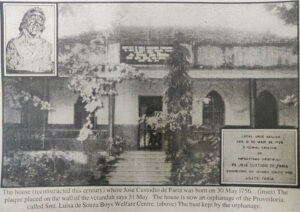 old city of Goa.
old city of Goa.
No bonds linked them ever since. The father and the son stayed a few years at their friends in Candolim – the Pintos of the Conspiracy fame – and at Colvale too. On 21 February 1771, four years after being ordained a priest, Caetano Vitorino left for Lisbon, en route for Rome, to continue his priestly studies. He had similar intentions for his son. Their social circle in Goa and particularly a letter of recommendation they carried for the nuncio in Lisbon, Mgr. Inocencio Conti, won them access to the royal court. Moreover, the reigning monarch, Dom José I, and his prime minister, the Marquis of Pombal, were favourably disposed towards the Goans, whom they strongly recommended for civil, military and ecclesiastical positions at home.
Student in Rome
Thus José Custódio was awarded a scholarship to study in Rome. The father returned to Lisbon in 1777 on attaining a doctorate to further his objective of objective of being appointed the bishop of Goa. His great disappointment and frustration on this count determined much of what followed in his life and his son’s too.
José Custódio stayed on and was ordained on 12 March 1780. At 24 he completed his doctoral thesis titled Theologicae Propositiones: De Existentia Dei, Deo Uno et Divina Revelatione (Theological Propositions on the Existence of God, One God and Divine Revelation) and joined his father in Lisbon.
The duo were good friends but a different purpose animated them. Caetano Vitorino, the more political minded and diplomatic of the two, was fully immersed in matters Goan. He was a sort of self-appointed protector of and influential reference for the Goan community. The Court had been impressed by the fact that, though immensely influential at the highest levels of the kingdom’s administration, he had never asked favours for himself, though it was known that his personal finances were far from bright. But then, intelligence reports began to pin him down as the mastermind and coordinator in Lisbon of a political revolt at home in 1787. As soon as news of this reached Lisbon, they hunted for the duo and their good friends, clerics and laymen.
Meanwhile, all except Fr. Caetano Vitorino had fled to Paris, reportedly to meet and discuss with their envoys of Tipu Sultan, who proposed to be on the French side in their ascendancy against the British in India, but nothing was confirmed in this respect. Others believe that simpler reasons motivated Fr. José Custódio’s sudden departure – that he was attracted by the intellectual climate of France. His father did, however, stay back, still persevering in his designs and probably even overestimating his influence with the high officialdom. He was then put under house arrest in the Carmelite convent where he gave his priestly assistance, and probably died in 1799.
In Paris
Nothing is known of Fr. José Custódio’s activities in the French capital except that he was accused, in 1792, of being a gambler and frequenter of the Palais-Royale. He was acquitted, or at least no action was taken against him by the police. Three years later, on 5 October 1795, he led a battalion of revolutionaries against the National Convention. This political stand made him popular with the supporters of the Directoire and won him the friendship of the Marquis de Chastenet de Puységur.
The latter relationship was decisive. The Marquis had been a disciple of Mesmer whose quackish furrows into ‘animal magnetism’ and tall claims of cures had initially won him the acclaim of high Parisian society. But, in 1785, his exit was shameful. The Marquis, on the other hand, was an honest, well-meaning and cultured person, who took over from where Mesmer had left. Dr Egas Moniz, the Portuguese Nobel Prize Winner and biographer of Fr. José Custódio de Faria, speculates that he acquired knowledge of magnetism in Paris after he struck up an acquaintance with the Marquis.
The first news of Fr. Faria’s activity as a magnetizer is of the year 1802, in the memoirs of Chateaubriand (published in 1843), who referred to his experiments in derogatory terms. He had dined with Fr. Faria at the house of the Marchionesse of Custine. Here, Fr. Faria reportedly declared that he could kill a canary by magnetizing it. However, when the magnetizer was put to the test, he failed, which led Chateaubriand to conclude: ‘O Christian, my presence itself will be enough to make the tripod ineffective!’ Chateaubriand was a devout Catholic. He had strong reservations against magnetism – because of the Church’s attitude of suspicion towards it. But what is more is that Fr. José Custódio de Faria was a Catholic, no less!
Fr. José Custódio continued his research into the subject up to the year 1811, when he was appointed professor of Philosophy at the Academy of Marseilles. The Imperial Almanac of 1811 records that he lived there a year and was elected member of a medical society. Since he had no medical qualifications, the membership can only be attributed to his skills as a magnetizer. But for some mysterious reason, he was transferred, in fact, demoted, to the post of auxiliary professor at the Academy of Nimes. He felt slighted and frustrated and, unaccustomed as he was to life in a small city like Nimes, he returned to Paris, in 1813, in search of greener pastures. Unattached to any institution, he initiated his course in magnetism on 11 August 1813, 49, Rue de Clichy.
Sessions
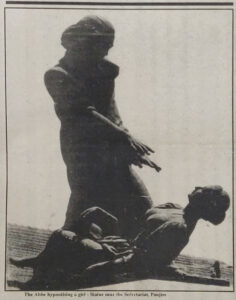
The sessions were held every Thursday, on an admission fee of five francs only. He began with a lecture in halting French. The audience, which consisted largely of women, paid scant attention to this part of the session; their eyes were set on what was to follow – his experiments to substantiate his theory.
Contrary to the claims made by Mesmer, the he could control the body fluids of his patients and rectify their course through special methods invented by him, Fr. José Custódio very humbly put forth that not all individuals could be hypnotised, and that the degree of response to his hypnotic powers necessarily varied from person to person. He was the first to establish that hypnotism was a science of suggestion.
Fr. Faria’s method consisted of a series of well-reasoned and effective actions: he got the patient to sit comfortably and, through concentration, to relax, imagining that they were going to sleep. When the patient was ‘tranquil’, he gave the command, ‘Sleep!’ and, if necessary, repeated it, with a certain degree of urgency, three or four times. If he failed, he would either sportingly give up or try other methods.
The sessions became the rage of the town. There were detractors, critics and skeptics, no doubt. Once, a journalist attended his session and then unjustly criticised and ridiculed the priest in the press. At another session, a leading stage actor, Potier, offered himself for his experiments. He feigned to be in a trance and suddenly rose to say, ‘Ah, Abbé! If you magnetize others as well as you magnetized me, you don’t seem to be doing much.’
Fr. José Custódio put up very well with all such betrayals. He also withstood quite stoically criticism from the clergy and Rome, who then viewed his experiments with suspicion always on the look-out for diabolical influences therein. But the priest always expressed respect for the Church and a firm desire to stay within the Catholic fold. ‘Un esprit supérieur,’ as his disciple Gen. Noizet said of him, he wished to convince the Church that his experiments were fully within the natural realm and that there was no magic or witchcraft involved.
Thus, Fr. Faria took everything in its stride. Only once did he break down, when at Potier’s request the playwright Jules Verne put up a play, on 5 September 1816, the Variétés, titled La Magnétismomanie, ridiculing the Goan priest.
Sad end
The time was now ripe for Fr. Faria to stop his activities. He retired soon thereafter, rendering priestly services in exchange for boarding and lodging.
During the last years of his life, he decided to organize his material in book form. It was an ambitious project in four volumes, of which only the first one is known to have appeared. It is his magnum opus is titled De la cause du sommeil lucide ou Étude de la nature de l’homme (On the Cause of Lucid Sleep or Study on the Nature of Man). In it he referred to the shameful play:
‘With regard to Magnétismomanie, I cannot ask which laws permit the modern Terence to expose an unknown foreigner to public ridicule. I presume that even the savage would be ashamed to insult his kind, which has nothing in common with actors and the theatre.
‘Far from me the idea to disturb public pleasures: But I might have added to Magnétismomanie a new scene – an extremely pungent one – had my condition not prevented me from doing so, and had my own aversion for such amusements not kept me away from playhouses.’
According to one biographer, by a strange coincidence, the day of his death, also marks the release of his book. His famous words, ‘There are evils that sometimes do good to those who discern their utility,’ might have very well served as his epitaph – if only he had the money for a decent burial. He died at the age of 63, unsung as he was born. A life full of ironies, for born of a rich family he died poor; born of parents who were in love, they separated after his birth; a man with original contributions to posterity, he died with no godfathers to promote his name.
(Herald Illustrated Review, Panjim, Goa. Vol. 95, No. 30, February 1-15 1995. Slightly updated version)
Mando Moments
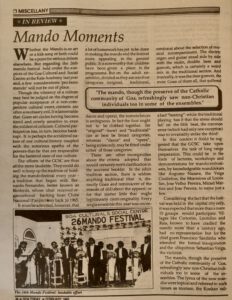
Whether the Mando is an art or a folk song or both could be a point for serious debate elsewhere. But regarding the 26th mando festival held under the auspices of the Goa Cultural and Social Centre (GCSC) at the Kala Academy last year end, a few considerations 'pro bono mando' will not be out of place.
Though the vibrancy of a culture may best be judged on the degree of popular acceptance of a non-competitive cultural event, contests are often a necessary evil. It is lamentable that Goan art circles having become timid and overly sensitive to even the mildest of criticism. Cultural participation has in turn become bankrupt. It is perhaps the accidental nature of our cultural history coupled with the notorious apathy of the powers-that-be that are responsible for the battered state of our culture.
The efforts of the GCSC are thus all the more laudable. They could do well to keep up the tradition of holding the mando festival every year – a tradition that began with Bernardo Fernandes, better known as Benferds, whose ideal received organisational backing from Clube Nacional (Panjim) way back in 1965.
It must be admitted, however, that a lot of homework has yet to be done in making the mando and the festival more appealing to the general public. It is noteworthy that children have been given a place in the programme. But on the adult ensembles, divided as they are into four categories (original, traditional, dance and opera), the nomenclature is ambiguous. In fact, the four ought not to be clubbed together, for "original" (new) and "traditional" can at best be broad categories, whereas "dance" and "opera", being styles only, may be fitted under either of those categories.
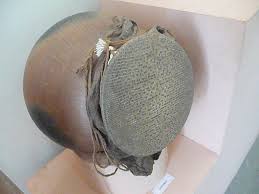
There are other incongruities about the criteria adopted that would certainly merit clarification in the souvenir booklet. In the adult tradition section, there is seldom anything traditional (that is, distinctly Goan and reminiscent of the mando of old) about the apparel; or for that matter little that might legitimately claim originality. Every single ensemble this year was unconventional about the selection of musical accompaniment. The electric organ and guitar stood side by side with the violin, double bass and gumott, which is certainly a weird mix in the traditional section. And ironically, it was the dear gumott, the most Goan of them all, that suffered a bad "beating": while the traditional playing has it that the stress should fall on the fifth beat, the common error (which had only one exception) was invariably to strike the third!
In this context it could be suggested that the GCSC take upon themselves the task of long range preparation. This could be in the form of lectures, workshops and demonstrations for mando enthusiasts, by knowledgeable manddekars like Augusto Nazaré, the Veiga Coutinhos, the Monteiros of Loutulim, José Velho Pereira, Micael Martins and José Pereira, to name just a few.
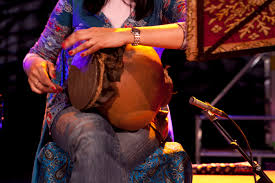
Considering the fact that the festival was held in the capital city only, it was expected that more than a mere 15 groups would participate. Villages like Curtorim, Loutulim and Raia, known to have cradled the mando more than a century ago, had no representation but for the chief guest Francisco Sardinha who attended the formal inauguration, and the ubiquitous Sebastião Veiga, the violinist.
The mando, though the preserve of the Catholic community of Goa, refreshingly saw non-Christian individuals too in some of the ensembles. The lyrics of the new mandos were topical and referred to such issues as tourism, the Konkan railway, drug addiction, unemployment, crime and the Konkani language. That the mando is a love song was spicily highlighted by the compere with his inimitable brand of jokes. At least two groups in the original category pinched the music of some well-known dulpods – an affront to all manddekars in the audience, and which should have fetched them a disqualification.

To enhance the festival spirit, is would certain pay to recreate the olden ambience of the mando, not only on stage but outside it. For instance, Goan sweets and delicacies could be made available during the intermission. To foster a greater involvement of the audience, a traditional dress contest could be held in the auditorium itself. Finally, in an effort to popularise literature and audio-visual material on the mando, the works of Agapito de Miranda, Antscher Lobo, Lúcio Rodrigues, Lourdino Barreto, José Pereira and Micael Martins could be exhibited and sold. This would mean a service to the general public and a fitting tribute to the past and present masters of the mando.
(Goa Today, February 1993)
A Paean to the Woman
The lines that follow form an insufficient paean to the Woman.[1] Yet, in this month of Mary, a few reflections may not be out of place.
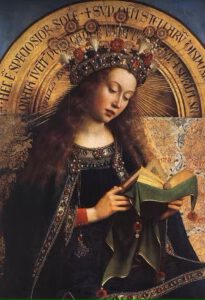
The role of the woman in the affairs of human destiny is invaluable. It is as wife and mother that she reveals the larger part of her noble self. Guide, inspirer, defender and lover of everyone in the family. she herself eventually becomes the best loved one.
She is the muse for her husband, and he sings of her glory. Feel the flow of his poetic vein as in Proverbs 31:10-31 –
A good wife who can find?
She is far more precious than jewels.
The heart of her husband trusts in her,
and he will have no lack of gain.
………………………………………………………..
Strength and dignity are her clothing,
and she laughs at the time to come.
She opens her mouth with wisdom,
and the teaching of kindness is on her tongue.
She looks well to the ways of her household,
and does not eat the bread of idleness.
Her children rise up and call her blessed;
her husband also, and he praises her:
"Many women have done excellently,
but you surpass them all."
Motherhood is a vocation which began to be better understood and appreciated in the glorious light of the Angelic Salutation to Mary, when she was called to be the Mother of God! The event has been a watershed in the history of humankind, with a Woman playing a definitive role in God’s Plan.

It can well be said that, with Mary, “God brought the dignity of woman to unsuspected heights. Mary is the guarantee of feminine greatness; she reveals the specific form of being woman, with her vocation to be spirit, to surrender, which spiritualises the flesh and incarnates the spirit.”[2]
With Mary, human life became a transfiguration. And what better example of this than the Holy Family of Nazareth? Nazareth became a splendid illustration of the Catholic spirit and lifestyle. The institution of the family began to grow and blossom ever since.
Now, if any family is found wanting or breaking, it could well be that the mother is either physically or spiritually absent. Modern-day circumstances sometimes make her physical absence a necessary evil. So, it might happen that when the mothers are away some serpents could be at play...
On this day, we hail the Goan wife and mother who has always been the pride of our people. Whatever her educational status, it is often she who teaches her learned husband the matrimonial equation 1+1=1. And when herself in a state of grace, she is able to nurture the household with grace!
Woman of today, let Mary be thy model, so as to ensure that our families become at least pale imitations of Nazareth. “A woman who fears the Lord is to be praised.”
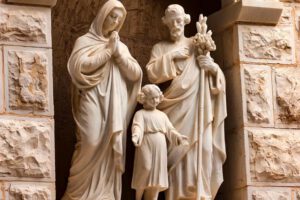
O Woman of today, let thy name be Maria ! Or, as that hymn[3] in Portuguese says –
Tudo seria bem melhor Everything would be better
Se o Natal não fosse um dia If Christmas wasn't just a day
E se as mães fossem Maria And if mothers were Maria
E se os pais fossem José And if the fathers were Joseph
E se a gente parecesse And if we looked
Com Jesus de Nazaré Like Jesus of Nazareth.
-o-o-o-o-
[1] First published as editorial titled ‘Let thy name be Maria’, in Yuvayana, a youth magazine of the Diocesan Youth Centre, Archdiocese of Goa and Daman, May 1991. Reprinted here with the addition of the last paragraph.
[2] "Apostleship of Prayer", in Don Bosco’s Madonna, May 91, p. 7
[3] “Estou pensando em Deus”, by Padre Zezinho, stage name of Fr. José Fernandes de Oliveira (1941-), a Brazilian priest of the Congregation of the Sacred Heart of Jesus, singer and songwriter.
Fated to sing...

International star Amália Rodrigues spent a few days in Goa to meet her fans and lovers of the Portuguese fado. She performed at Kala Academy's Dinanath Mangueshkar auditorium to a 1000-plus audience on the evening of June 5.
Despite her 70 years of age, Amália, as she is affectionately called, regaled one and all. Her language is universal, so the youngsters understood her too. But for the older folks which comprised 75 per cent of the audience the performance was tinged with nostalgia. The sentimental Portuguese sang their fado (fatum, fate) far from their country, on the banks of the Mandovi.
Born of humble parentage in Lisbon, in 1920, Amália, who sang fados and tangos at the tender age of three, made her debut at 20.
At the Campal auditorium she regaled the audience with twenty-eight fados, old and new: ‘Rosa Fogo’, ‘Amêndoa’, ‘Entrega’, ‘Povo’, her own ‘Grito’, ‘Lágrima’. And lágrimas de alegria (tears of joy) flowed down her cheeks when she noticed the excitement of her fans as she sang the older numbers like ‘Que Deus me perdoe’, ‘Nem às paredes confesso’, ‘Madragoa’, ‘Barco Negro’, ‘Mariquinhas’, ‘Lisboa Antiga’, ‘Alfama’, ‘Lisboa, não sejas francesa’, ‘Coimbra’, ‘Ai Mouraria’, ‘Foi Deus’, to end with ‘Casa Portuguesa’.
And a Casa Portuguesa (Portuguese house) it was indeed. Remarked an All India Radio staffer, ‘This is probably the audience we have for our weekly Renascença…’
Amália sang and conquered. She had four brilliant accompanists: Pinto Varela and Carlos Gonçalves (Portuguese guitar); himself a composer, Joel Pina (viola baixo), and Lelo Rodrigues (viola). The sustained brilliance of the foursome dramatically underlined the romantic and expressive nuances of the fado which came effortlessly to the Queen of the Fado. The enraptured audience only wished Amália had come here in her younger days.
A charismatic personality, Amália is said to have ‘rescued’ the fado, transforming it into a universal art. Today her strongest point lies in the fact that she can still draw a big audience the world over, but oddly enough not in Portugal itself. Still she is easily Portugal’s best cultural ambassador to the world.
The show in Goa was sponsored by Fundação Oriente. Amália’s stopover in Goa, on her way to Macau, South Korea, Japan, USA and Monte Carlo, was definitely a landmark in the cultural calendar of this tiny state, but sad to say, the occasion was mismanaged by local co-sponsors INTACH.
Things began going wrong, right from the word go. Invitations and passes were distributed at the fancies of INTACH members, much before the general public even became aware of the show. A member of the audience commented that the passes finally went not to Amália fans but only to a coterie. The result: an indignant public responded by gate-crashing. And, certainly, enthusiasm overflowed from the back rows of the auditorium which comprised, among others, several gate-crashers!
What was also unbecoming was the near-anarchic scene at the gate and inside the auditorium where there were no ushers. The compere too was a poor choice: with scant knowledge of Portuguese, he faltered at every step, and even mispronounced the key word, fado, to rhyme with mando!
Finally, unpardonable was also the fact that while Amália was showered with gifts, garlands and bouquets, from the Government of Goa, Panjim Municipal Council and INTACH, her four smart accompanists were left high and dry! Minus points for the fabled ‘Goan hospitality’…
An international star deserved better coverage in the press, not for her sake but for the benefit of the public at large. But Amália was hardly in the limelight. And it was hardly her fault. Her fado was to have the local entourage impose themselves on the Queen to the point of disallowing her contact with pressmen, barring a few instances of journalists who had to fight their way in.
But to Amália these things mattered little. It was also in her fado to lose her baggage in transit. But that did not deter her. She wore that beautiful smile and lent everyone her magic voice…that’s because the fado turns magical with Amália.
This even makes us redefine the fado. The Portuguese language dictionary calls it destino, fatalidade, canção popular e dolente (‘destiny, fatality, a song popular and sorrowful’). But the face of the fado has changed over the years. This compels us to redefine the fado as Amália!
(Goa Today, July 1990)
Mapping Goa's Architecture
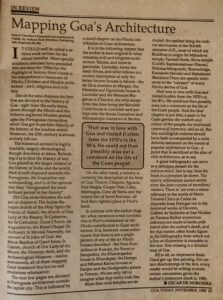
Goa - A Traveller's Historical and Architectural Guide, by Antony Hutt. Scorpion Publishing Ltd, England. Rs 200
It could well be called a serious work written for the casual traveller. More specific academic exercises have preceded this one since the 1950s but the highlight of Antony Hutt's book is his comprehensive treatment of Hindu, Christian and Muslim architecture – civil, religious and military.
Out of the nine chapters the first five are devoted to the history of Goa – right from the early times down through the Hindu and the hitherto neglected Muslim period, up to the Portuguese connection, when Goa got to partake directly of the history of the modern world. However, the 20th century is almost entirely left out.
The historical account is highly readable, largely chronological, though desultory at times. Refreshing it is to find the history of tiny Goa placed in the larger context of the history of India and the world. Hutt is well disposed towards the Portuguese, the Inquisition notwithstanding, and is of the opinion that they "inaugurated the most brilliant period in her history".
Old Goa alone becomes the subject of chapter 6. The Indian Baroque church of the Holy Spirit (St Francis of Assisi), the church of Our Lady of the Rosary, St Catherine, the Cathedral See, Grace Church (St Augustine's), the Royal Chapel (St Anthony), St Monica Nunnery, the convent of St John of God, the Minor Basilica of Good Jesus, St Cajetan, church of Our Lady of the Mount, the Viceroys Arch, and the Archaeological Museum – twelve monuments, all of them mapped. Good treatment this but no real revelations whatsoever.
The next few pages are devoted to Portuguese architecture outside the capital city. This is followed by a novel chapter on the Hindu contribution to Goan architecture.
It is in the following chapter that the author is least original in what concerns civil and religious architecture. Salcete, and more in particular, Loutulim, forms the main thrust, and what follows is a routine description of only the better known houses in Salcete – the da Silva mansion in Margão, the Miranda and Figueiredo houses in Loutulim and the Menezes Bragança in Chandor, the only exceptions this time being the Salvador Costa house in Loutulim and perhaps also the Souza Gonçalves and Albuquerque mansions in Bardez.
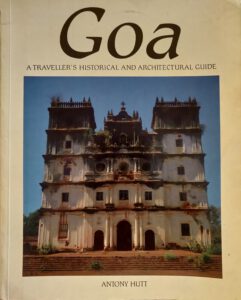
On the other hand, a novelty is certainly the description of the forts of Goa: Tiracol, Chapora, Aguada, Reis Magos, Gaspar Dias, Cabo, Marmagoa, Cabo de Rama and the inland fort of Santo Estevam, all find their rightful place in Hutt's book.
In contrast with the earlier chapter, what constitutes a real contribution is Hutt's elaboration of the Hindu contribution to Goan architecture. It is, however, most unfortunate that there is not a single picture of any of the six Hindu houses described – the Sinai Kundaikars in Kundai, the Ranes in Sanquelim, the Khandeparkar house in Khandepar, the Dempo and Mhamai Kamat houses in Panjim and the Deshprabhu palace in Pernem. We are only left to imagine what they really look like.
More than nine temples are included, the earliest being the rock-cut sanctuaries of the 3rd-6th centuries A.D., most of which are Buddhist in origin; Sri Mahadeva temple, Tambdi-Surla; Shiva temple (Curdi), Saptakoteshwar (Naroa); Mahalsa, Mangueshi, Shantadurga; Kamakshi (Siroda), and Mahalaxmi (Bandora). There are specific references to the "odyssey" of many Hindu deities of Goa.
Hutt was in love with Goa and visited it often from the 1970s to the 80s. He could not then possibly miss out a comment on the life of the Goan people. And the final chapter is just that, a paen to the Goan genius: the warmth and colour of the people, the traditional communal harmony, and so on. But this sociological exercise should have been accompanied by a more definite statement on the nature of popular architecture in Goa – a point that is sacrificed at the altar of elite architecture, so to say.
A good bibliography can serve as a delicious dessert for the curious mind. Sad to say, here the book is a complete let-down. The scanty information cannot satisfy even the least curious of travellers/readers. There is not even a minor reference to the works of Mário Tavares Chicó or Carlos de Azevedo from Portugal nor to the historical works of Danvers, Gabriel de Saldanha or José Nicolau da Fonseca. Rather mysterious references are made to books published after the author's death, and for that matter, other books figure in the bibliography from which not a line or illustration is traceable in the text. Also missing is a detailed map of Goa.
All in all, an impressive book. Good get-up, fine printing. For certain shortcomings of the text, every reader would be willing to make certain concessions given the author's premature death in 1985.
(Goa Today, November 1989)
The State of our Forests
Over thirty citizens, including environmentalists and social scientists, met in the city, Sunday morning, on the eve of World Forest Day, to discuss the present state of Goa’s forests and draw out comprehensive measures to preserve the existing tree cover and conduct active reforestation and afforestation programmes.
The day-long seminar convened by Reggie Gomes of the Goa Research Institute for Development (GRID) was inaugurated by Mr Sinha, Conservator of Forests. Speakers included Claude Alvares, K. D. Sadhale and Dr A. G. Untawale.
We must also interact with lobbies like mine owners and real estate developers, learn their viewpoint and embark on a cooperative effort to save the land.
Papers
Mr Sinha said in his inaugural speech that monoculture of eucalyptus and teak trees and the conversion of virgin forests into artificial plantation areas were two bad features of local forestry. He estimated 24% of the total area of the union territory of today to be under forest cover. The annual revenue of the Forest Department is around seventy lakh rupees, half of which is spent back on forests, he said. One of the afforestation schemes started by the local government is in cooperation with the Comunidades. Though the seeds are provided by the government free of cost, the profits of the cultivation are to be equally shared, he said.
Mr Sadhale spoke on “Forest Conservation Strategy in Goa”. He decried the rampant denudation in the territory, accusing the governmental staff of conniving with antisocial elements. He said that natural generation of new forests is in danger due to overgrazing, spread of ground fire, kumeri cultivation, spread of eupatorium weeds, green manure, and soil erosion, among other things. He called upon the government to adopt a “go-slow policy” as regards the tourism industry, industrialization and irrigation projects.
Claude Alvares, in a forceful presentation of some strategies for reforestation, branded the Forest Department a “colonial institution” whose sole aim is to draw maximum profits unmindful of the real cost-benefit ratio. He applauded the government’s idea of planting mixed species of trees

indigenous to Goa. He praised the “tree consciousness” of the Goan people and their innate tendency to plant ‘useful’ trees for domestic consumption.
However, the outdated regulations in force today and the highhandedness of the Forest Department which “zealously guards its hegemony from the people” has only succeeded in antagonizing the people, he said. He called for the restoration of degraded forest lands, reforestation of areas originally planted to monocultures and the reclamation of lands devastated by mining.
Mr Untawale, of the WWF (Goa), expressed concern over the protection of the vegetative cover along the river or estuarine slopes, hills and valleys. He felt that these areas being systematically destroyed today particularly by the growth of hotels along the riverside. Intensive social forestry must be started in the cities, he said.
Two more papers, one by Percival Noronha, on “Forests in Goa: Past and Present” and another, by Vijay Paranjape, on “Dam(ned) Projects and Forest Law” were circulated in absentia.
Small cells could be formed to act as watchdogs at the village level.
Plan of Action
The participants of the seminar expressed widespread disillusionment with the present government machinery. Though the debate failed to take off onto a general plane, being dotted with personal accounts of harassment by government officials, the discussion did plant a few seeds for a more general and fruitful public debate in the future.
In a bid to reduce cases of corruption among officials and private parties, it was suggested that public blacklisting be done of individuals and institutions engaged in unforestry acts. They expressed the need for protest marches in the territory in order to focus public attention on so grave an issue.
A working or core group was formed at the final session of the seminar. They shall draw up a follow-up programme and soon announce their plan of action. People concerned about the issue of forestry in Goa may contact GRID, Bella Mater Bldg, Flat No. 3, Santa Inez, Panjim.
Urgent Need
There is an urg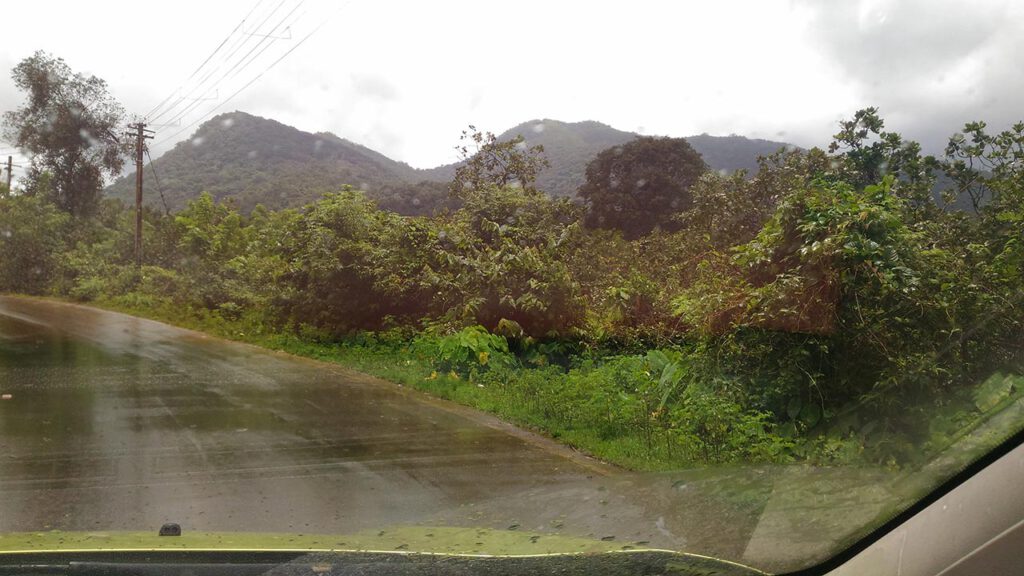 ent need to transform this exercise into a people’s movement. It is high time we realized that if such programmes are to succeed, they require the active cooperation of the people. What we need in Goa today is the people’s opinion on matter of general concern. The more educated and knowledgeable of our people ought to discuss such issues in their own circles and thus generate an opinion; otherwise there will be people talking at seminars and others only listening and blindly accepting.
ent need to transform this exercise into a people’s movement. It is high time we realized that if such programmes are to succeed, they require the active cooperation of the people. What we need in Goa today is the people’s opinion on matter of general concern. The more educated and knowledgeable of our people ought to discuss such issues in their own circles and thus generate an opinion; otherwise there will be people talking at seminars and others only listening and blindly accepting.
For the benefit of those of us who are in the dark about issues like forestry in Goa, private bodies and the government must cooperate and come forward to conscientize the people. There are many people in our villages who do not know what procedure to follow when they want to cut trees they themselves had planted years ago. They fall prey to corruption.
Small cells could be formed to act as watchdogs at the village level. However, care must be taken to see that forest plunderers themselves don’t head them. No amount of legislation can save us from disaster if the people are not vigilant. No amount of seminars will be fruitful if we don’t have action-oriented plans.
The need for interaction with the government is paramount. We must also interact with lobbies like mine owners and real estate developers, learn their viewpoint and embark on a cooperative effort to save the land. Lack of cooperation will only mean friction and chaos.
A final word to our political parties: they should consider the idea of introducing subjects like forestry, tourism, art and culture, high and clear in their election manifestos.
A Inquisição de Goa, vista por Raul Rêgo
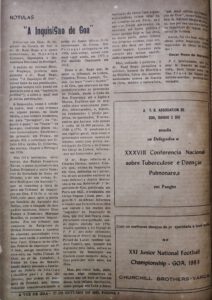
Estiveram em Goa, de regresso da Coreia do Sul, o Sr. Dr. Raul Rego e o nosso conterrâneo Dr. Narana Coissoró, Deputados à Assembleia Nacional de Portugal.
A pedido do Instituto Menezes Bragança, proferiu uma palestra o dr. Raul Rêgo, sobre a Inquisição de Goa, talvez tema da sua predilecção, porque sempre a veio pondo em paralelo com a sua inquisição política, e sobre o qual tem já várias publicações.
A Inquisição, como é sabido de todos, teve o seu tribunal em alguns países, na Idade Média, e nos tempos modernos, ou para ‘perseguir’ou ‘inquirir e punir’ou ‘curar’os hereges, conforme dizem vários historiadores. Estabelecido primeiro em França, no século XII, e solicitado por D. João III e Raínha D. Catarina, sua esposa, chegou a Portugal em 1536.
Mas foi a instâncias, entre outras, do Padre Francisco Xavier, o maior missionário das Índias Orientais e então Superior da Sociedade de Jesus no Oriente, e do seu colega Simão Rodrigues de Azevedo, que se concebeu a ideia de abrir um Tribunal de Inquisição em Goa. E fê-lo o Rei em 1560, oito anos após a morte em Sanchão do Apóstolo das Índias, com a chegada de dois padres seculares, Aleixo Dias Falcão e Francisco Marques Botelho, os primeiros inquisidores.
Era um tribunal que constava de Religiosos da Ordem Dominicana e também de algumas autoridades civis (que mais tarde o usaram para seus fins). Situava-se no célebre Palácio da Inquisição ou do Sabaio, antiga residência dos vice-reis, na Velha Cidade de Goa, ao pé da Catedral, à frente da Casa do Senado, tendo depois passado a funcionar no Palácio do Idalcão (Vhoddlem Ghor) na Rua Direita, por ordem do Marquês de Pombal, que, tendo reduzido consideravelmente o poder do Santo Ofício, fê-lo instrumento da Coroa. Em Portugal, extinguira-se em 1769, para voltar, talvez com mais vigor ainda, em 1777, e foi abolida finalmente em 1812.
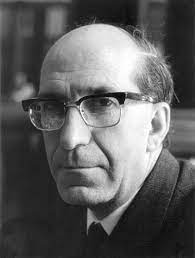
Disse o dr. Rego que, de entre os tribunais de Lisboa, Coimbra, Évora, Lamego e Tomar, foi mais ‘cruel e nojento’ o de Goa, que abarcava na sua jurisdição todas as províncias do Oriente, desde o Cabo da Boa Esperança até o Japão e Macau. Explicou que os acusados eram severamente punidos, encarcerados, e, depois, ou condenados à prisão perpétua, ou queimados. E acrescentou que haviam sido presas por à volta de 16.000 pessoas, de 1560 a 1774. O arcebispo e o seu vigário-geral, bem como o governador, estavam isentos do mesmo, senão com prévia autorização da Corte e do Conselho Geral de Lisboa, informa-nos um historiador goês.
O dr. Rego referiu-se a Charles Dellon, médico francês que, vítima da Inquisição em Goa, defendeu-se (permitia-se aos acusados escrever as suas defesas) e depois descreveu-a na sua Relation de l’Inquisition de Goa, publicada em Paris, em 1622, e traduzida em várias línguas (trad. port. do goês M. V. de Abreu).
Informou o orador que fora com essa obra que vieram à luz muitos dos ‘segredos’da Inquisição de Goa, que por isso ficara completamente envergonhada, sendo depois abolida em 1774. Aludiu também a La Voyage de F. P. L. aux Indes Orientales, Moluccas et Brazil, de François Pyrard de Laval, também medico francês, que, quando em digressão pela Índia, sofreu as torturas da Inquisição em Cochim, como suspeito dela, e fora preso por dois anos, em Goa.
Mas, por outro lado, parece-nos algo subjectivos os relatos que até hoje se fizeram deste, hoje infame, instituição, tanto porque nos falta a documentação da época (que alguns historiadores crêem estar em Londres ou em Paris, se é que não foram queimados ou vendidos em hasta pública) como porque hoje se faz obra, na maior parte, pelos relatos das próprias vítimas, cujo critério não deve ser por isso muito seguro. Levados pela emoção não teriam sacrificado algumas verdades?
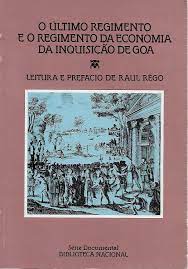
Mas, voltando à palestra: o dr. Raul Rego, jornalista e escritor, homem da História e da Política, falou tão emocionantemente acerca de Garcia de Orta, médico e naturalista, “que mais sofreu às mãos da Inquisição”, como falou também de António Sérgio de Sousa, que por sua vez mais sofreu na inquisição do regime ditatorial de Salazar.
Assim, foi tão bom autor das obras sobre a Inquisição como inquisidor das obras do Ditador!
(Nótulas: 'A Inquisição de Goa', in A Voz de Goa, Pangim, Ano I, N.º 34, 27 de Outubro de 1983)
Foto: Mesa do Tribunal da Inquisição, hoje pertença do Instituto Menezes Bragança (Goa: Aparanta – Land beyond the End, ed. Victor Rangel-Ribeiro. Vasco da Gama: Goa Publications, 2008)
Our Honoured Guest
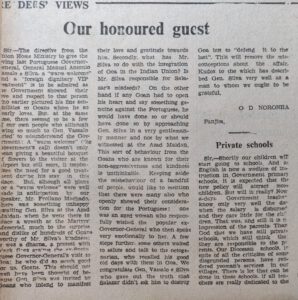
The directive from the Union Home Ministry to give the loving last Portuguese Governor-General, General Manuel Antonio Vassalo e Silva, a “warm welcome” and a “foreign dignitary VIP treatment” is to be admired as the Government showed their love and respect to that person who earlier pictured his fine sensibilities to Goans whom he so dearly loves.
But, at the same time, there seemed to be a few of our own people who although owing so much to Gen. Vassalo tried to misunderstand the Government: A “warm welcome” (the Government’s call) doesn’t only mean giving a beautiful bouquet of flowers to the visitor at the airport but still more, it emphasizes the need for a good treatment during his stay in this place.
Although all plans for a “warm welcome” were made well in anticipation by our Speaker, Mr Froilano Machado, there was something unhappy awaiting Gen. Silva at the Azad Maidan, when he went there to place a wreath at the Martyrs’ Memorial, much to the surprise and dislike of hundreds of Goans worthy of Mr Silva’s kindness: it was a dharna, a protest with black flags against the ex-Portuguese Governor-General’s visit to Goa; he who did so much good for us Goans. That should not even have been thought of because Gen. Silva was invited by Goans who intend to manifest their love and gratitude towards him. Secondly, what has Mr Silva to do with the integration of Goa into the Indian Union? Is Mr Silva responsible for Salazar’s misdeeds?
On the other hand, if any Goan had to open his heart and say something genuine against the Portuguese he would have done so or should have done so by approaching Gen. Silva in a very gentlemanly manner and not by what we witnessed at the Azad Maidan. This sort of behaviour from the Goans who are known for their non-aggressiveness and kindness is unthinkable.
Keeping aside the misbehaviour of a handful of people, I would like to mention that there were many also who openly showed their consideration for the Portuguese: one was an aged woman who respectfully wished the popular ex-Governor-General who then spoke very emotionally to her. A few steps further, some others waited to salute and talk to the octogenarian, who recalled his good old days with them in Goa.
We congratulate Gen. Vassalo e Silva who gave out the truth that Salazar didn’t ask him to destroy but to “defend it to the last”. This will remove the misconceptions about the affair.
Kudos to the editorial which has described Gen. Silva very well as a man to whom we ought to be grateful.
(Letter to the editor, The Navhind Times, Panjim, 12 June 1980, p. 2)
